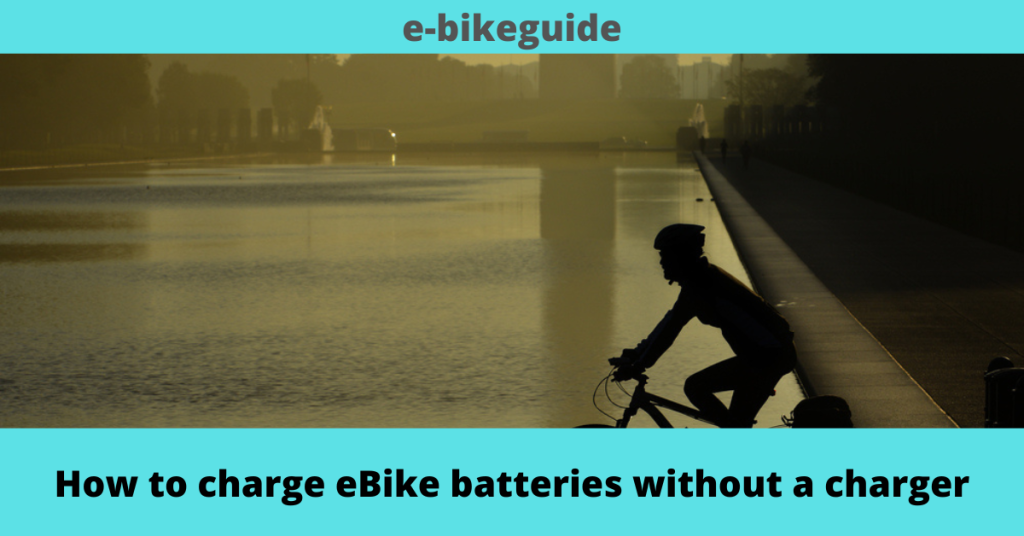
From the start of the human race till now, the way we move from one place to another has changed drastically. Two million years ago, however far it was, man used to walk to move from place to place, however far it was. Oxen is the first animal to be domesticated, followed by horses and donkeys. As using animals to travel far had its own drawback, the invention of the first bicycle changed it.
German baron, Karl von Drais, is known as the father of the bicycle. He invented the first ever bicycle in 1817. Though his invention got its spotlight, it did not last long because of the gadget. The rider had to kick against the street and incorporate it. Changes were made by other inventors from time to time, making it safer for the person who rides it.

Pedals were added in 1860, which increased the use of bicycles. An oversized front wheel was added, hoping to add more stability. Later, equal-sized wheels and chain drive solved the safety issues that arose due large sized front wheels. Brakes and tires have been developed over the years. Modern-day bicycles have stayed the same with life changes since then.
In1890s, the patent was given to add electric motors to the bicycle, thus introducing the trend of motorcycles. Electric bikes were built a decade or so later, which was more like a moped. Michael Kutter developed an eBike, that was recognizable. It was throttle-less, and powers were controlled by pedaling. Yamaha produced a similar machine in 1993.
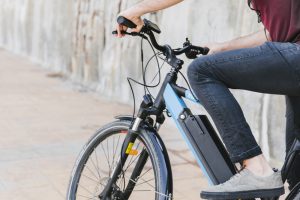
All the eBikes fall into two main categories: pedelecs that assist the pedal power, and bikes that add a throttle. What differentiates electronic bikes from electronic motorcycles is the pedaling.
Evolution of eBike
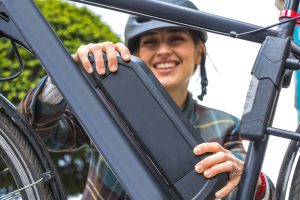
Electronic bikes were first developed in the 19th century. Several eBike patents were registered from 1895 to 1899. Few are:
- Ogden Bolton patented battery-powered bicycles in 1895.
- Bicycles with a double electric motor, patented by Hosea W. Libbey in 1897.
- Electric motor with roller wheel patented by John Schnept in 1899.
In the late 20th century, eBikes gained popularity when models with torque sensors and power control were developed. ‘Select’ was the first commercially successful eBike presented. Forty-nine different models were presented the following year.
Panasonic and Yamaha, two big automobile companies in Japan, began their eBike mass production in early 2000 and distributed worldwide.

eBike resembles the traditional bicycle, with an efficient electric motor and easy control methods. Some bicycle has a pedal while some don’t. Electric bikes for the m 1990s had a solar charging panel, which is replaced with batteries.
Rechargeable batteries are used to power small electric motors. And those powers are limited to riding bicycles for about 24 to 32 km/h.
Due to the popularity and convenience, eBikes are in demand in countries like China, America, and Europe countries.

A rise in the demand for electronic bikes has led to an increase in eBike charging stations around the country. You could use capsules in malls, supermarkets, and hotels around the country to charge your dying battery.
Why is eBike so popular

With the emergence of motor vehicles in the streets, the air started to get tainted. Thus the increase in motor vehicles leads to more and more pollution and health issues for the citizens. In order to reduce and clean the atmosphere, many automobile manufacturers try different methods. One such invention is the eBike. Though the first invention took place in the 19th century, it attained more popularity only two decades back. Due to many of its advantages, it stands out among motor vehicles. A few of them are:
Less effort

Traditional bikes need more of your effort, while eBikes help you travel those distances with less effort. It helps people with a slow metabolism or medical issues enjoy the ride.
When climbing the steep paths in mountainous areas, with your efforts, you could ride up the path, without walking your bike up. Though you would start sweating sometimes, the energy could be saved to travel back.
People with medical conditions that are not allowed to ride the traditional bike can enjoy the experience of eBikes.
Environmental friendly

With the combustion engines in motor vehicles polluting the air, eBike is an eco-friendly alternative. Many countries are going green and, in the near future, will completely ban cars and bikes with combustible engines. Many automobile manufacturers are attempting to invest more in eco-friendly vehicles.
Stress buster

A bike ride on a weekend with friends relieves you from the stress that’s weighing you down. With eBikes, you could enjoy those rides with less physical stress on your knees and joints. These bikes are gentle, and even older adults could enjoy an evening on them with our friends.
Everyone hates traffic and busy subways; e-bikes are one way of avoiding them and reaching your destination with no sweats.
Brainy

These electronic bikes have inbuilt computers that connect to your smartphone. It could store details about your riding history, location, navigation, and fitness training.
Manufacturers are developing safety tools to insert into eBikes.
Fitness training

Though it is effortless and you could have a smooth ride, you could also use it to train them. With the option, you can choose any power control mode that is available. With a smooth drive to fitness training, you could use them.
Just like every other object, electronic bikes have cons that you should consider. A few of them are:
- Cost
With so many features that make life easier, one should expect it to be expensive. Only you could decide if the bike is worth the price, depending on your usage.
- Weight
The weight of an e-bike is quite heavy compared to the traditional bike. It would be exhausting to carry one. With a dead battery, it would be a tiring ride too.
- Time is taken to charge
Traditional bikes need no fuel or charging. The move with the energy exerted from pedaling. But eBikes need charging and it is time-consuming. Though it is not a difficult task, you have to remember to charge it if you want the pedal assistant to work for you on your next ride.
Ways to charge your eBike without a charger.

You might have lost your eBike’s charger, or you went too far from home, and your eBike’s battery is down. There are temporary solutions to recharge your eBike’s battery, but it is not permanent. Try to buy a charger if you have lost it.
Here are some ways you could charge your eBike without a charger:
USB charger

USB charger comes in handy to charge many electronics, and eBike is no exception. It would charge your eBike lithium-ion battery. Though larger batteries cannot get benefited from it, the smaller ones would. All you have to do is find a USB charger that would be lying around your home. Connect the discharge end of the cord to your bike and the other end of the cord to a device with a USB socket. Switch on the device to start charging.
Remember, trying this on larger batteries would malfunction the battery. Even though it suits smaller batteries, try not to use this method more often.
Alternative battery

You could also charge your eBike’s battery using other batteries. By connecting two or more batteries to your eBike’s battery in a sequence, you could easily charge your eBike’s battery. Energy will flow into your eBike’s battery, and the energy will flow out of the batteries you are using, giving you the desired energy flow.
Remember to check the outflow of batteries is the same and that the batteries used to give off the energy, are the same.
Using car battery

By connecting the car’s lead acid battery to the electronic bike’s lithium-ion battery, you can charge your eBike. As your car’s battery is much more powerful compared to the eBike’s smaller battery, you have to be mindful of the power supply. Using an inverter, you can control the voltage flow from your car battery to your eBike battery.
Remember not to leave your eBike battery unattended, as overheating may lead to permanent damage to the battery.
Using Solar Panel

Solar power is cheaper and eco-friendly, and solar panels could be used to charge many electronic batteries. Though they seem less powerful, they actually have powerful energy stored inside. You should have a solar charge regulator or solar inverter to charge your eBike using solar panels.
Remember to wear protective gloves and eye shields when dealing with solar panels, to protect yourself from electric shock.
Using a generator
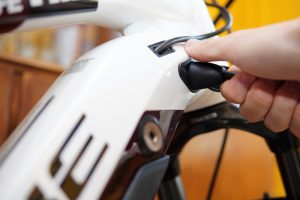
A generator will come in handy for many electronic works if you have no power supply. eBikes could be charged by connecting the generator and the eBike’s battery through a charging cable.
Having a portable generator on the go will give you an excellent and adventurous ride. Mostly, if you would like to travel far.
Remember to check the energy flow and adjust it accordingly to ensure a safe charging session.
Using induction charger
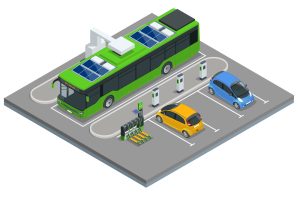
Like traditional chargers, induction chargers do not need an electrical outlet. Simply by placing the electronics that could be charged on an induction charger or the batteries on the charging surface, you can charge your batteries.
Many manufacturers are using this wireless induction technology to charge their eBikes rather than depending on the electrical outlet. These charging methods are environmentally friendly and convenient.
At a charging station

Due to the increase in the use of eBike all around the world, many countries have eBike charging stations all around the country. You can find many indoor charging stations at various malls and restaurants.
Look for the nearest eBike charging station on your mobile, and ride there. Disconnect your eBike’s battery and connect it to the suitable charging port.
Clip charger
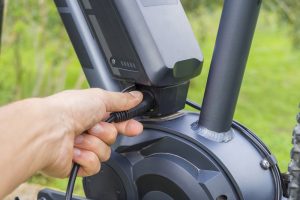
Though clip chargers are not so common as USB port chargers, you can have a go at them if you have them. Place the eBike battery in the clip charger’s loading station and connect it to the power supply. Make sure the clip charger is working and in good condition as it could damage your eBike’s battery permanently.
Remember, not to touch the battery that is charging with bare hands to avoid electric shock.
Pedaling

‘Energy is neither created nor destroyed, but transferred from one form to another- this is the principle of energy conservation. Regenerative braking or pedaling technology is used in many eBikes that allows charging the battery while pedaling. The energy produced while pedaling is converted into electric power, which is usually lost. It gives the power to charge your eBike’s battery. Most but not all eBikes have this feature.
Tips for healthy eBike batteries

Though you could use some temporary measures to charge your e-bike batteries without the charger, those are not permanent solutions. Only using the original charger to charge your eBike’s battery is the best solution for a low or dead battery. Alternative ways that are used for a long time could result in a damaged or malfunctioned battery.
Here are some tips for maintaining a healthy and long-lasting battery life:
Check the battery level often

Check your eBike’s battery level before and after each ride. Make sure to charge it if the battery level is below twenty percent after the ride.
Charge the full battery every-time

Make sure you charge to the full the first time before going on a ride. Note how long the battery last to understand the battery life of your eBike.
Every time you connect your bike to charge its battery, make sure you are charging it to the fullest. Try not to disconnect it in between, as it could damage the battery life.
Do not overcharge your battery.

Just like most electronic devices, overcharging your eBike’s battery would result in a decrease in its lifespan.
Overcharging and charging to the fullest is not the same. You disconnect your bike from the charging capsule when it has reached the maximum charging point when you charge to the fullest. But when you leave for hours or days after it has reached its maximum charging unit is overcharging. This could seriously damage the battery life.
Avoid often charging when your eBike’s battery level has gone only by ten to fifteen percent from the maximum battery level.
Charge the battery on a flat surface
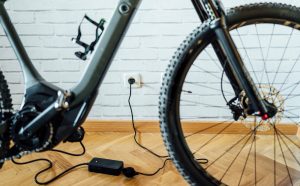
Every time you charge your eBike’s battery, make sure the surface is smooth and flat to avoid falling down as it might damage the battery.
Also, avoid direct sunlight falling on the battery, as it too could damage the battery.
Do not keep a dead battery on the eBike for too long

On almost any device, keeping a dead battery for too long would result in malfunctioning the device, and the battery would ooze off. eBike is no exception. So, if you are planning on not riding your bike for more than a month, make sure your battery is not fully drained. It would be better if you remove the battery from your eBike and store it safely.
Use the right charger.
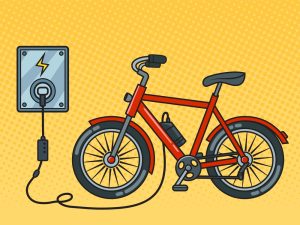
Try to use the original charger of your eBike unless you have no other options than to use an alternate way. Using any other charging options often will damage the battery’s health.
